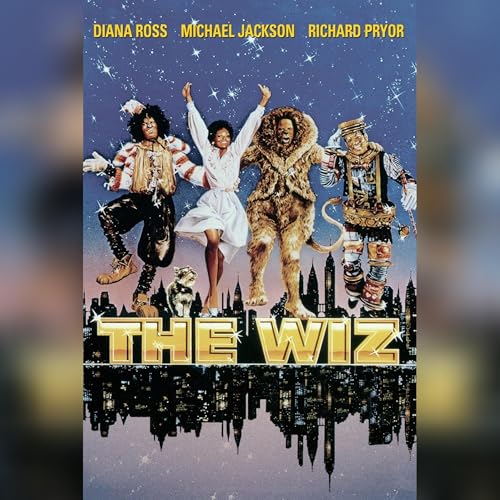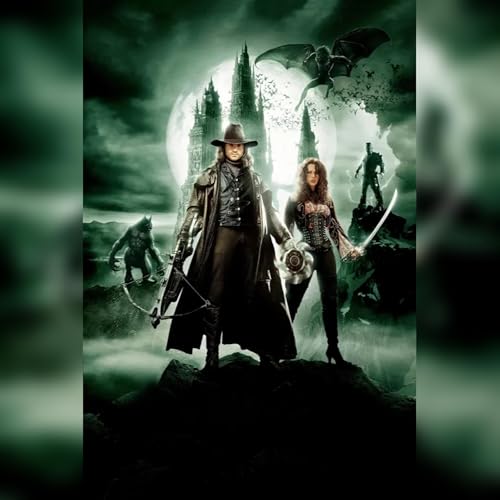The Wiz (1978) was chosen by show supporter Maff, who’s got a talent for picking bold, imaginative movies that really stand out from the pack. This time, he’s gone for one of the most ambitious musical productions ever made. The Wiz was Universal’s lavish reimagining of The Wizard of Oz, retold through the lens of African American culture and late-1970s New York style. Directed by Sidney Lumet — more famous for his gritty urban dramas like Serpico and Dog Day Afternoon — the film brought together an all-star cast including Diana Ross, Michael Jackson, Nipsey Russell, Lena Horne, and Richard Pryor. With a staggering $24 million budget, it was one of the most expensive musicals of its era, aiming to blend Broadway magic with the spectacle of big-screen fantasy.The production was a monumental undertaking. Filming took place across New York City landmarks like the World Trade Center, the New York State Pavilion, and the Cyclone rollercoaster in Coney Island, all transformed into surreal fantasy settings. Legendary producer Quincy Jones oversaw the music, infusing the original Broadway score with disco, funk, and gospel influences. Despite its breathtaking ambition, The Wiz was plagued by production challenges, critical skepticism, and financial losses on release. However, in the years since, it has earned cult classic status — celebrated for its stunning visuals, imaginative choreography, and Michael Jackson’s breakout film performance. It may not have conquered the box office, but The Wiz remains a vibrant, soulful experiment that dared to take Oz somewhere entirely new.If you enjoy the show, we have a Patreon, so become a supporter here.Referral links also help out the show if you were going to sign up:NordVPNNordPassTrailer Guy Plot SummaryShe wanted something more… but she never imagined this.When a storm sweeps a shy Harlem schoolteacher into a world unlike anything she’s ever known, she must follow the road, face her fears, and find her way home — with the help of some unforgettable friends.Starring Diana Ross, Michael Jackson, and Richard Pryor — from the streets of New York to the land of Oz, it’s a journey of music, magic, and pure 1970s soul.*The Wiz* — ease on down the road to where dreams, disco, and destiny collide.Fun FactsThe Wiz began as a Broadway musical in 1975, which won seven Tony Awards, including Best Musical — long before the movie version was made.Motown Productions co-financed the film, marking one of the first major studio partnerships between Hollywood and a Black-owned entertainment company.Michael Jackson was only 19 years old when he starred as the Scarecrow — and the experience led to his lifelong creative partnership with Quincy Jones.The film’s costume designer, Tony Walton, created over 300 costumes, many of which were made from recycled materials to give the movie’s world a gritty, urban feel.Sidney Lumet’s wife, Gail Jones, the daughter of Lena Horne, helped convince Lumet to take on the project despite his lack of musical experience.The movie’s version of “Ease on Down the Road” became a chart-topping hit for Diana Ross and Michael Jackson, reaching #41 on the Billboard Hot 100.The yellow brick road was constructed from real vinyl flooring, giving it that glossy, otherworldly shine seen in the film.The production used over 650 dancers for the film’s large-scale musical sequences — one of the biggest ensembles ever assembled for a musical at the time.thevhsstrikesback@gmail.comhttps://linktr.ee/vhsstrikesback
Voir plus
Voir moins
 Nov 26 202553 min
Nov 26 202553 min Nov 19 202546 min
Nov 19 202546 min Nov 12 202556 min
Nov 12 202556 min Nov 5 202552 min
Nov 5 202552 min Oct 29 20251 h et 1 min
Oct 29 20251 h et 1 min Oct 22 202548 min
Oct 22 202548 min Oct 15 20251 h et 2 min
Oct 15 20251 h et 2 min Oct 8 202553 min
Oct 8 202553 min
